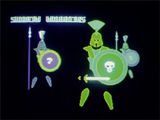Software
During the "first wave" of online interactivity in the 1980's it became clear that
the UX Practice must handle 4 jobs
Presentation
Production
Transaction
Transformation
The newly emerging interactive online industries had to build a large number of pages that could be updated easily, were platform independent, and retained some "meta-information" intelligence about themselves. We didn't really have many standards in the interactive industry just yet, so I invented my own data-tagging system. It was crudely XML-ish - but it worked.
Metadata tagging is Information Architecture
The separation of data Content from presentational Context allows us to provide Content Integration through Context Management.
Design Tools
Here are the products that The Communication Studio put on the market to support the "first wave" of interactive services in the US between 1984 and 1988.
Early TCS collaborator Bill Porter provided substantial programming and inspiration for many of the products described here.
TEXTUP
Context Management System
The TextUp Workstation lets you quickly edit graphically sophisticated pages through a simple Template and Clip Art-driven design tool.
![]()

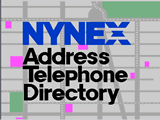
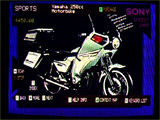
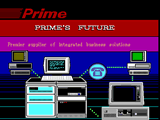
Edit, merge & highlight Text content
Merge graphic Clip
Generate Bar Charts and Histograms
Custom Font Styles for Text Titling
Manage your production process
This product was a bit ahead of its time: We engineered in some of the strongest pre-Web attributes of HTML, CSS, and even XML.
Textup is a rudimentary meta-information tagging system that provides annotation, templating and an English-language-y user interface that allows a person with basic secretarial skills to easily update graphically sophisticated pages safely and quickly.
Textup Clients
TextUp, Show and OTTO had a rebirth in 1990 when I re-engineered those template management techniques into the Electronic Sales Assistant for the Newspaper Association of America.
IMAGE LIBRARY
Clip Art
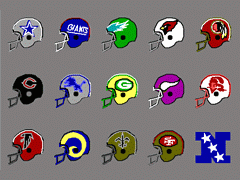
Our Clip Art imagery was specifically designed for use with TextUp templates.
We offered hundreds of images and animations, including corporate logos, product & sports logos, icons, portraits, backgrounds, illustrations, maps, animations, bar chart styles and custom font styles.
Sports team logos, in particular, were integrated powerfully with templates in Otto, the automated version of TextUp.
Okay, okay.... so the logo images displayed above look kind of crude. Bear in mind that they were done in 1984 with 1984 tools and were intended to be used on available 1984 technology. Which is to say... a computer screen that offered 320 pixels of resolution and all of 16 colors.
Hey, you work with what you've got.
ENVIRONMENT
Interactive Database
This fully-featured site platform is targeted as a standalone self-service information "kiosk" that could be updated online.
The IIA Conference
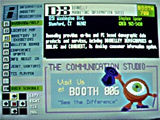
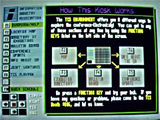
In 1986 we approached the Information Industry Association with a proposal to provide an interactive kiosk on the floor of their tradeshow and conference in New York City.
- Exhibitor Directory
- Exhibitor Floormap
- Bulletin Board
- Information About the IIA
- Conference Meeting Update
- Quick Schedule
- Joint Venture partnering list
- Graphic Presentation Showcase
- Help/Tutorial section
- Automated Ad Billboard
We provided a major tradeshow with a full suite of convention floor services - And we made money. Here's how: the Interactive Kiosk proposal
SHOW
Page Presenter
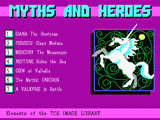
This billboard manager lets you create, edit and present a group graphicically-sophisticated pages as an automated -or manually-controlled - "slideshow" that can be displayed on any computergraphic device.
When combined with our TextUp templates and Clip Art, you have .... uhhhh ...
... Actually you have networked, device-independent, updateable, animated PowerPoint-like presentation templates - In 1984.
TextUp, Show and OTTO had a rebirth in 1990 when I re-engineered those template management techniques into the Electronic Sales Assistant for the Newspaper Association of America.
EDNA (EDit NAplps)
Annotated Code Disassembler
This technical tool displays the underlying code of a NAPLPS computergraphic file with referential annotation - Also allows simple editing. It was our first and most fundamental design tool.
Because, of course, once you have a code dis-assembler it also means that you have a code re-assembler.
This fundamental "Rosetta Stone" engine allowed us to take pages apart, tag the parts, and thereby separate Data Content from Presentational Context. Now we have templates, stylesheets, clip art, metadata tags, and the ability to produce data-driven pages - as well as some other nifty stuff.
OTTO
Automated Page Formatter
This software page generator engine takes a "bare bones" simple text file, automatically reformats the data in it into graphic templates, and stores the result under a new filename. In many ways, Otto may be viewed simply as an automated version of TextUp.
Example: SportsTicker Hockey Score Update
Slide #1
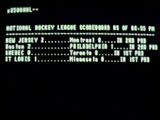
Parse the "raw" text-only SportsTicker feed according to the Data Rules.
Data 1 : Home Team : "New Jersey"
Data 2 : Home Team Score : "2"
Data 3 : Visiting Team : "Montreal"
Data 4 : Visiting Team Score : "0"
Data 5 : Period of Play : "2"
Slide #2
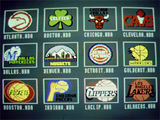
Identify and affiliate the appropriate Team Logo Clip art with the Data.
In this example, the New Jersey Devils logo is matched to the data item
"NHL : Home Team : New Jersey"
Slide #3
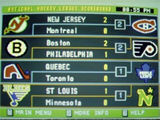
OTTO assembles the finished (enhanced) page:
Template
+ Logo Clip Art
+ SportsTicker data
The Automated Page Formatting Engine
"Batch" processes a group of files
Reformats a single file of ASCII text information into multiple display formats (for different applications.
Merges graphics on basis of rules
Generates Bar Charts and histograms on the basis of the incoming data
TextUp, Show and OTTO had a rebirth in 1990 when I re-engineered those template management techniques for the Newspaper Association of Americai as the Electronic Sales Assistant.
It was all based on implicit and explicit metadata tagging of information. And since all Otto templates are completely tagged, you can also custom-edit individual pages with our CMS TextUp tool.
Our Clients
These organizations licensed TCS productivity software between 1984-1990:
Before the Web and during the Transitional Surge
Dreamware
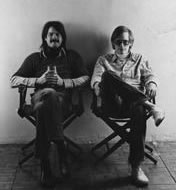
These were some early software concepts that The Communication Studio prototyped, but never fully marketed during the "first wave" of interactivity in the early-to-mid 80's.
Some of the concepts were kind of forward-looking.
John Vaughan and Bill Porter in the loft (1983)
Phoenix (1986)
Smart Art
Purpose:
Screen Designer featuring Automated Field Labeling. This was to be the "next step" for the TextUp suite of productivity tools. Pretty sweet - especially this early on the curve.
PHOENIX is a graphics screen creation system that allows you to dynamically add metadata tags to the design elements as you create a page. Features include:
Iconic Menus can be relocated anywhere on the screen.
Automated "One-Step" Metadata Field Labelling
Enter Customized Text Font (using TCS Text Font Library)
Merge Clip Art File
On-Screen Text Formatting and Entry
"Elemental Design" editing controls
Full range of NAPLPS drawing and animation capabiliies
Store output as Bitmap or NAPLPS Vectorgraphics
As far as I can tell, PHOENIX was one of the first screen-design tools to offer integrated information tagging as one of the design features.
It allowed you to exercise robust Content Management as part of your site design.
Midi Vidi (1986)
See / Hear
Purpose:
Integrated Music/Graphic Construction Set wedded to the MIDI (Musical Instrument Digital Interface) standard for "musical communication"
- "Sound-Synchronous" MIDI Interface permits
- Drawing and Cursor Control
- Dynamic Color Definition
- Display Timing Controls
- Keyboard/MIDI/Execution Table Interrupts (Live Performance)
- MIDI SOFMACRO Assembly
- Updatable Graphic Themes
- Edit Images Selectively
- Output as MIDI Execution Table
MIDI-VIDI Production Unit
Requires high level of expertise and knowledge in creation of M-V product. Product to be consumed by:
Band - visual content customized to accompany recorded music
Juke Box - Visual "filler" generated on the fly
Live Performance
MIDI-VIDI Juke Box
Passive, tied to "click track" or random generator, user interaction limited to "visual thematic control" in MIDI-VIDI VJ
* bars (existing need, presently filled by cable tv, sports, or random channel selection PROFILE: visual background, sync-to music moderately important)
* discos & niteclubs (existing need, presently filled by music videos, live cameras, light grids, graphic "clips" and projections PROFILE: highly animated and dynamic visual wallpaper, graphically oriented, sync-to-music important)
* public spaces
* marketing booths (existing need, filled by slides or video with poor quality audio cassette support PROFILE: dynamic, animated
graphics, text-oriented, audio a major attractor feature, click-
track)
* cable tv channel filler (existing need, often unfilled or poorly filled by radio broadcast over visually dull news scroll
PROFILE: visual wallpaper w/ opportunity for attractive
advertising, click track)
* consumer hobbyist (speculative)
MIDI-VIDI Pro Synthesizer
MIDI-VIDI Home Synthesizer
MIDI-Vidi weds images and music dynamically.
More than just a passive, beat-box-driven color organ, MIDI-Vidi actually allows you to choose - or create - themes where the audio and video are tied together meaningfully through musical semantics.
Of all the TCS Software products, this was the one that really captured my heart. Thanks forever to early TCS collaborator Bill Porter for partnering on this one. His musical skill and knowledge (mine is nil) truly made it happen.
FaceDancer (1985)
Dynamic, Responsive, Customizable

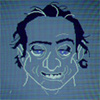

Purpose:
Manage presentational attributes modularly and dynamically
We initially saw this as an identi-kit tool that was interactive, portable, extensible and virtual, allowing police departments to quickly assemble and distribute systematized suspect identification drawings.
File Merging (Library of Design Patterns)
Dynamic Display Controls (Click it. See it.)
Open-Ended Assembly Process (Change anything at any time)
You can "Mix 'n Match" design attributes
Notice the leisurely pace of the drawing of graphics in this video. It's not intentional. This was the default speed for dynamically presentating graphics on the standard "browser" of that time (circa 1985). Early days, but we made it happen.
Potential Applications: Police Identi-kit, Game, Personalized Design Templates
The FaceDancer concept of consistent semantic tags in a flexible design environment was an extension of TCS Textup. It's the conceptual basis of the StyleSwitcher feature.
Fun & Games
Virtual Worlds
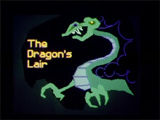

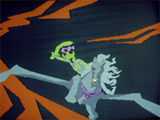
The graphical sophistication and inherent animation of early interactive platforms in the US - lent themselves particularly well to gaming. It was a natural path: Early personal computers (which were often dismissed as "game machines") were accessible and there was already a strong consumer interest in gaming
TCS partner Bill Porter and I were heavily involved in pioneering the interactive online arena. The potential for Massive Multiplayer Online gaming was definitely on our radar early on the curve (1983), even though it would not actually become real until many years later.
"Dragon's Lair", "Minotaur" and "Shadow Warriors" (at right) put sophisticated graphical paint onto the scenario-based, strategic adventure style of RPG interactive game that was popular during the early days of personal computers.
Bill and I also toyed with realtime "first person" shoot'em up type of games, though programming those in within the substantial memory and display limitations of the time was quite a stretch.
Our first venture in that arena was "Bunker" (No images survive, alas). It allowed you to shoot artillery at tanks, which were advancing upon your position. It was simplistic, but challenging: There was a delay between when you aimed & fired and when the shell would land. You needed to anticipate tank speed and path - and the tanks could be tricky.
